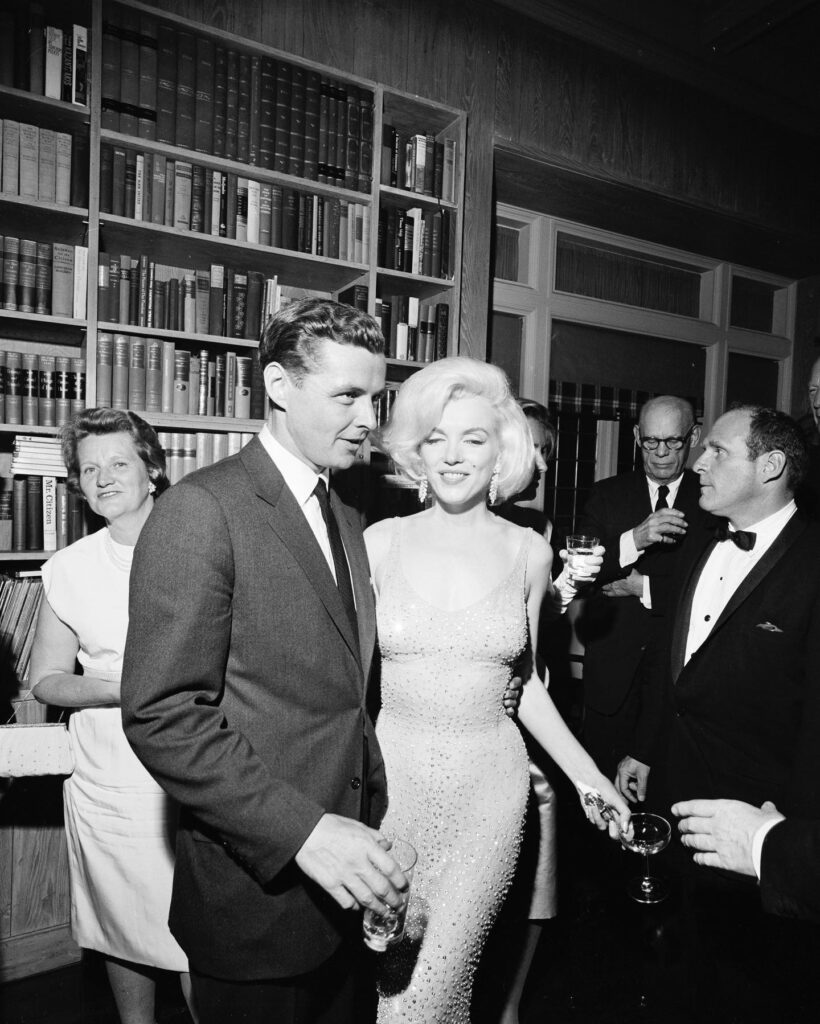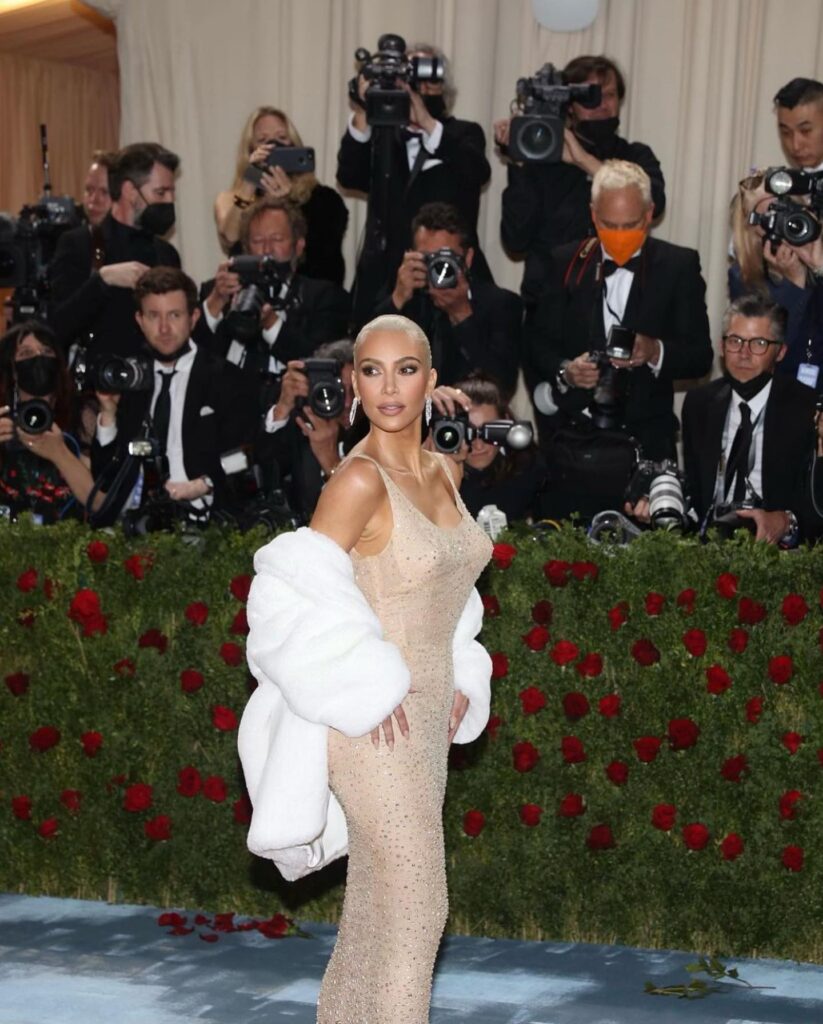Deconstructing Kim Kardashian's Toxic Interpretation of American Fashion at the Met Gala

Photograph from Instagram

Photo by Matthew Baron | Instagram
Where were the jewel tones, the corsets, the rich embroidered silks, the fluffing of chiffon? This year's Met Gala came at us quickly but with much disappointment, mainly due to the lack of effort put into Fashion's biggest night out. Commemorating the second half of the Met's In America: An Anthology of Fashion, presented across the American wing's period rooms, the exhibition displays men's and women's clothing between the years 1670 to 1915.
Considering that the gilded age was the age of excess in America and how far extra we've come to be, you'd think that's the easiest component for celebrities to bring to the 22' red carpet. Instead, we got an underwhelming amount of glamour, beginning with Kim Kardashian's unwise and polarizing fashion choice.
Kim wore the original crystal-studded, soufflle silk dress belonging to Marilyn Monroe, first unveiled on America's President John F. Kennedy's birthday, particularly during her serenade singing a sweet happy birthday to him that sparked controversy. Nearly seven decades later, the dress continues to invite quarrels within the art and fashion world; for historical importance, preservation, and ethics. Notably, the ICOM (International Council of Museums) Costume Committee, who's worked with countless museums worldwide, including The Met, stated their professional opinion on how the dress should have been handled, highlighting that the historic garment should not have been worn, by anyone regardless of who this individual might be.
Firm on their stance (although updated from being called out by museum director Puawai Cairns saying the statement was too Eurocentric), they provide a link as a "quick reference" to curators and museums, finishing with: "As museum professionals, we strongly recommend all museums to avoid lending historic garments to be worn, as they are artifacts of the material culture of its time, and they must be kept preserved for future generations."
Wearing historical garments seems like we're treading on a slippery slope - if preservation of these garments isn't enough to dissuade those who can offer the right price or have the correct name- what is? Ripley's is equally complicit in opening this can of worms, prey to others who dream of bringing their Marilyn moment to life.
What's most gut-wrenching is Kim's pompous attitude towards what seemed to be a militant style diet leading up to her long-awaited Marilyn moment. In an interview with Vogue, she explains losing 16 pounds in less than three weeks. If we're talking about literal fashion statements, this one was much less progressive in the dichotomy of body politics for our day and age. It was "this or nothing" for the celebrity whose commitment was undeniable, from tracking down the dress's current caretaker, Ripley's Believe It Or Not Museum, to her determination to fit into the dress leading up to the Gala. But is it sending the right message?
Speaking on weight loss was reckless of her - sharing it amongst America's weight-obsessed society - at center stage.
But her Marilyn transformation was over within minutes. The priceless gown was coordinatedly slipped on, inches away from the red carpet, and slipped off moments after reaching the top of the Gala stairs. The sole reason was to not cause any irreparable harm out of her extreme respect for the dress. It sounds like a walking contradiction if anything rings true.
When asked, Fashion designer Bob Mackie echoed the criticisms of historians & conservationists alike over Kim's "big mistake" [her choice of attire]. He tells Entertainment Weekly
It was done for her. It was designed for her.
The weight of the fashion designer's opinion is solid. As an assistant to fashion designer Jean Louis, it was Mackie who drew the sketch of the famed dress.
This frequent, paralleled moment in American culture & Fashion is memorialized for breaching the demure customs of the time and setting a long-standing standard of beauty and body image. Monroe's hourglass figure is still marveled at, and even by today's standards, "body goals." Fashion Designer Bob Mackie exclaims, "her figure was at its peak," remembering the moment he first saw the photos of Marilyn in the dress. An unsettling thought as Monroe was underweight, depressed, and months before her untimely death. I say this not to assume Mackie or those closest to the star were aware of her unseen battles but to note how dangerous it is to leave this fact out of current narratives about her coveted figure. And in doing so, the harm caused to society when revisiting and glamorizing this moment.
This is not the moment in Fashion; America should be idolizing in 2022, where body politics have been nothing less than progressive, especially in recent years, and shame on the red carpet for praising such behavior.

